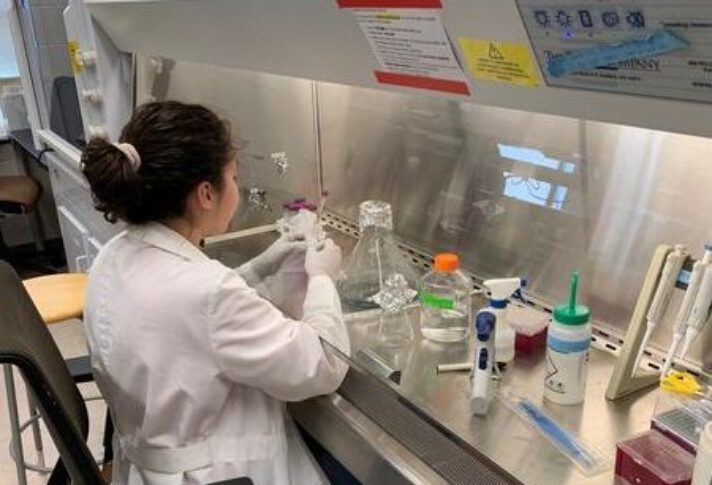
Undergraduate Research
The training of Earth and planetary scientists broadly spans the boundaries between biology, chemistry, engineering, physics, mathematics, and the Earth sciences themselves, reflecting the interconnected nature of Earth’s natural systems.
Your studies will provide a comprehensive intellectual foundation that is beyond what is typically possible in a “pure” science program. In turn, this opens up a wide spectrum of research focuses.
Our students pursue research in a variety of ways. Concentrators work with faculty and graduate students through coursework, on major research projects as a research or field assistant, or as part of an independent research project. Writing a senior thesis based on field, laboratory, or theoretical research provides students with the opportunity to explore beyond the elementary level in one or more relevant subfields. We are here to support you in finding a research opportunity that matches your interests and goals.
Many of our students find opportunities by making a direct connection with EPS faculty members. For guidance on crafting an email to faculty members, check out our email template.
- Office of Undergraduate Research and Fellowships — Broader opportunities for study, travel, and public service
- Harvard University Center for the Environment — Summer research opportunities and financial support for projects related to the environment
- Harvard Oceanography Committee — Funding for oceanography-related programs
- Salata Institute for Climate and Sustainability — Summer opportunities, funding, and career development
- Department of Energy: Student Programs and Internships
- RISE Germany Research Internships in Science and Engineering
- Green Corps Field School for Environmental Organizing
- Harvard Forest Summer Research Program
- Hispanic Access Foundation’s MANO Project
- Marine Physical Laboratory (MPL)
- Mass Media Science & Engineering Fellowship
- NASA Internship
- NCAR Internship
- NOAA Student Opportunities
- NSF REU (Research Experience for Undergraduates) Earth Sciences
- SCEC Internships
- Scripps Undergraduate Research Fellowship (SURF)
- SEEDS- A Program of the Ecological Society of America
- STEM SEAS (Student Experiences Aboard Ships)
- Student Conservation Association
- URISE Internship Program
- Woods Hole Oceanographic Institution Summer Student Fellowship
Our department provides generous support to undergraduates conducting research, presenting at conferences, and spending the summer working in Cambridge. To apply for funding, contact Campbell Halligan, the Academic Programs Manager.
For information about funding sources and tips on applying, review the Summer STEM Research and Funding Panel presented by our undergraduate students.
Check out all the exciting and creative research our undergraduates have been a part of in the last few years:
Computer Science Primary, EPS Secondary
Advisor: Kevin Reed, Stony Brook University
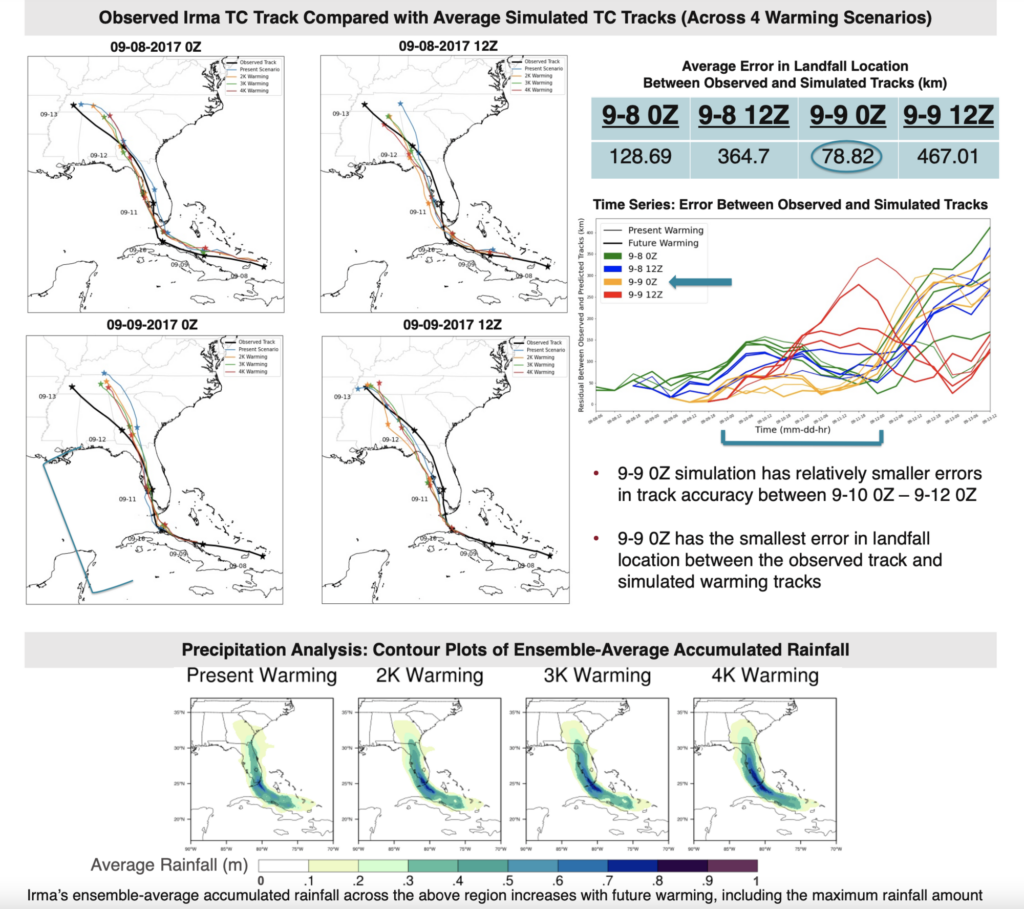
Understanding how extreme weather events, such as tropical cyclones (TCs), will change as a result of future anthropogenic climate warming is an intriguing computational and societal challenge. Changes in TC metrics related to storm genesis, intensity, and precipitation are crucial to study to project how TCs may fare in the future and to assess their potential for damage. TCs are expensive extreme weather events, not just monetarily. Extreme precipitation, intense winds, severe flooding, and potentially fatal storm surges are costly to people’s livelihoods and the strength of communities.
We are exploring potential changes in Hurricane Irma’s track and extreme rainfall. Previous studies have modeled individual storms under several climate change attribution methodologies. We apply a hindcast attribution technique that leverages the Community Atmosphere Model (CAM5) to initialize and simulate various scenarios of Hurricane Irma under future warming. Employing rigorous statistical modeling and computational techniques, we analyze the projected changes in these TC metrics for Hurricane Irma across different climate warming scenarios and evaluate them against an observational dataset. With anthropogenic climate change, studying the trajectory of TCs under warming conditions provides insight into humans’ contribution to extreme rainfall and storm intensity.
EPS/Astrophysics Joint
Advisor: Robin Wordsworth
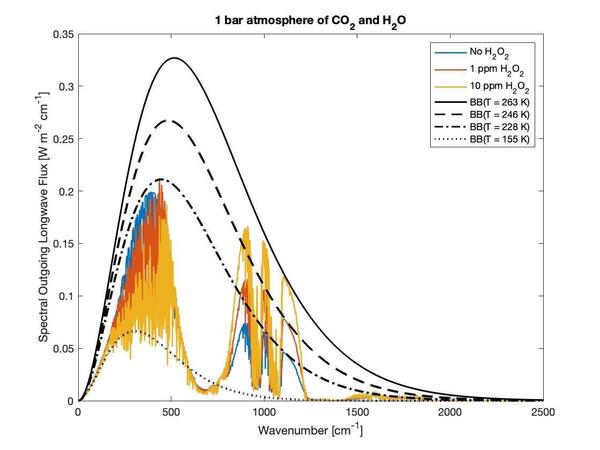
I worked with Robin Wordsworth on modeling greenhouse gas warming on early Mars. Modern features on the surface of Mars such as canyons, deltas, and lakebeds suggest the presence of past liquid water, but how it was warm enough to support liquid water remains a mystery. Using a 1D radiative-convective model, my work has focused on adding new greenhouse gases to a simulated Martian atmosphere ~3.8 bya and analyzing the impacts on surface temperature, outgoing longwave radiation, and other changes to atmospheric radiative equilibrium.
EPS Primary, Spanish Secondary
Advisor: Lisa Kumpf, Charles River Watershed Association

This summer, I was working with the Charles River Watershed Association on two small projects related to water quality and watershed management. My first project was to monitor for E. Coli along the Charles River, which I did by motoring a flat bottom boat at sunrise down from Nonantum along the river to downtown Boston and taking samples at four different locations– it was so fun and beautiful! The second project I was working on was a GIS project to redefine the bounds of the Muddy River Watershed, the most contaminated tributary to the Charles River, which will be used to guide a long-term restoration project for the area. If you’re interested in watershed science/ management, feel free to reach out for a chat!
EPS/Astrophysics Joint, Physics Secondary
Advisor: Mercedes Lopez-Morales, Harvard-Smithsonian Center for Astrophysics
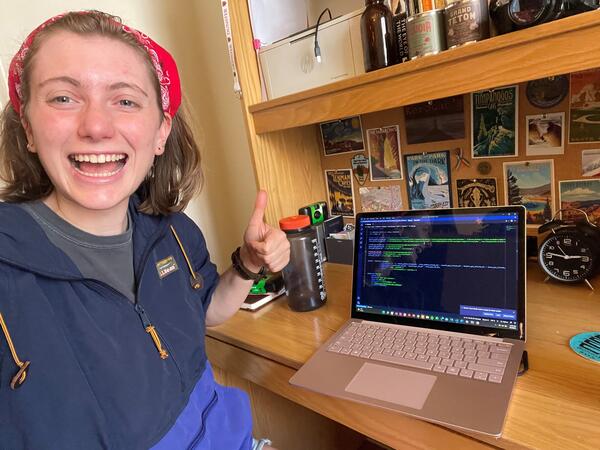
I worked with Dr. Mercedes López-Morales to begin my senior thesis project. Through simulations, we are investigating how F stars can potentially cause contamination in detections of exoplanet atmospheres. I worked on building up a foundation by familiarizing myself with the current literature on the subject and the code I will be using, and I’m super excited to dive further into this project this fall!
Integrative Biology Primary, Astrophysics Secondary
Advisor: Ann Pearson
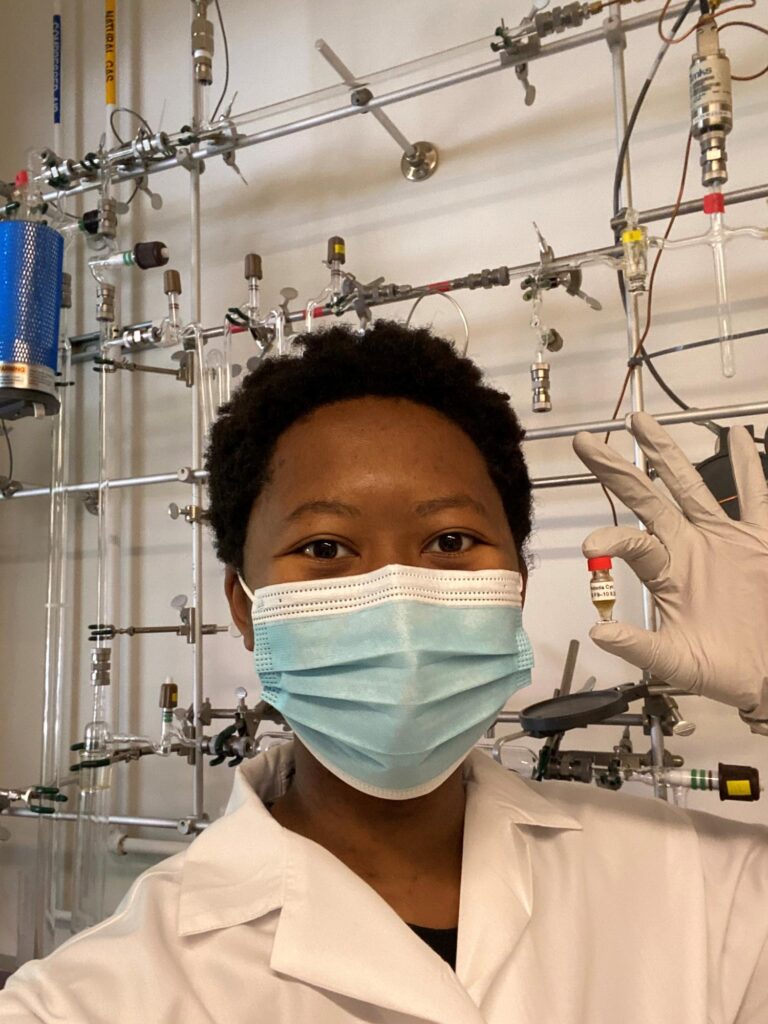
Knowledge of the environmental conditions that can develop and support life on our own planet is the best basis available for identifying potential extraterrestrial habitats. This past summer (2021), I began work on my senior thesis in the Pearson lab. My goal is to analyze the carbon isotopic composition of archaeal tetraether lipid biomarkers, GDGTs, at cold methane seep environments to assess methane assimilation by marine archaeal communities. Cold methane seeps, a terrestrial analogue for possible environments on moons with subsurface oceans, such as Europa and Enceladus. Cold seeps are areas on the ocean floor where hydrogen sulfide and hydrocarbon-rich gases like methane percolate through underlying rock and sediment layers and emerge at the ocean bottom.
A major objective of my thesis is to determine if the carbon sources for archaeal communities change in tandem with the amount of methane migrating to the sediment surface. Now that I have extracted and separated all the lipids I want to study, the next step is to analyze the carbon stable isotopic composition using a spooling wire microcombustion-isotope ratio mass spectrometer. Isotopic analysis of GDGTs will help determine if these archaeal groups are predominantly taking up methane, marine DIC, or are consuming organic carbon; it will also help to quantify the actual contribution of archaeal methanotrophic metabolism. The second half of my thesis will occur in the Girguis lab, where I will determine the identity of the archaea using optimized DNA extraction methods that target hypervariable regions unique to this fascinating taxonomic domain. Working on this project has been a dream come true, and I’m so grateful to my advisors, the Pearson and Girguis groups (especially my mentors Katherine Keller and Isabel Baker), and the EPS and OEB departments for making this amazing experience possible.
Undeclared Concentration
Advisor: John Shaw

During the summer of 2021, I was an undergraduate research fellow as part of PRISE (Program for Research in Science & Engineering) in the Harvard Summer Undergraduate Research Village. In the Hoffman Laboratory (EPS Department), I specifically conducted computational research with the Shaw Lab Group, mentored by Dr. Josimar Silva for our project focusing on Earthquakes and Oil Production at the Wilmington Oil Field. While earthquakes have long been attributed to tectonic processes and natural stress changes underneath the Earth’s surface, there is reason to believe that anthropogenic triggers may be responsible for some seismic activity, including activities such as fluid injection related to oil and gas production, geothermal energy extraction, and carbon capture and storage. The goal is to determine the effect of Wilmington historical oil production and water injection on the stability of pre-existing geological faults.
To simulate the changes in reservoir rock pore pressures that induce normal/shear stress changes along the Wilmington fault, I began working on building a coupled multiphase flow and geomechanics model in MATLAB. My work heavily involved programming and devising algorithms, often for optimization in the fluid dynamics 3D visualization model of the Earth’s subsurface. Fortunately, I was able to work in the lab during the entire summer, and it was in fact the very first academic building I have been in at Harvard!
EPS Primary, Astrophysics Joint-Allied
Advisor: Peter Huybers
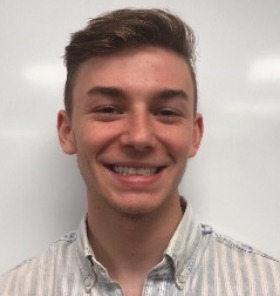
This summer, I worked with Professor Huybers to try to improve estimates of soil moisture at a specific location to ultimately better understand the effects of climate change on soil moisture and agriculture. I first spent time familiarizing myself with different products of NASA’s Soil Moisture Active Passive (SMAP) mission, their temporal and spatial resolutions, and using MATLAB to plot these products. Using data from SMAP, I then attempted to replicate the process that SMAP uses to go from one data product to another, learning about how to find all of the data points within certain grid box perimeters and taking a binned average. While I did not get far enough in my research project to test my own attempts at estimating soil moisture compared to those of SMAP, the goal was to take an inverse distance weighted interpolation of data points within a certain grid box where data points closer to our location of interest are weighted more heavily than those further away.
Chemistry Primary, EPS Joint-Allied
Advisor: Steve Wofsy
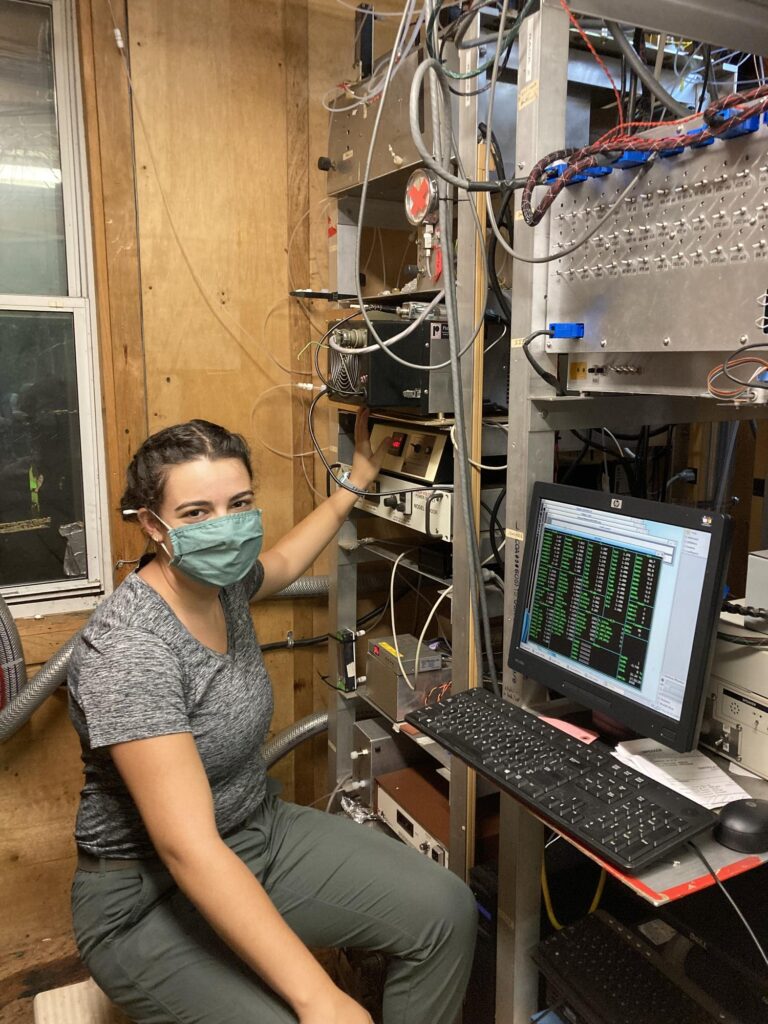
In the summer of 2021, I conducted research on rural nitrogen oxide emissions at Harvard Forest under the supervision of Bill Munger and Steve Wofsy. Nitrogen oxides (NOx) are major precursors to tropospheric ozone, a pollutant harmful to human health. NOx levels were monitored at Harvard Forest in the late 90s and early 2000s, and I had the opportunity to process more recent data from 2016 to 2019 in order to assess whether emissions there have changed over time. I used R to handle the large datasets, learning a lot about coding and data analysis along the way. The data from the late 2010s showed a decrease in the concentration of tropospheric NOx since the early 2000s, which may be a result of anthropogenic emissions controls in the Northeast. I also visited Harvard Forest in person and helped with instrument maintenance so that NOx will continue to be measured in the future, providing long-term insight into the presence of ozone precursors and better understanding of how these pollutants impact the troposphere.
Applied Mathematics Primary
Advisor: Marianna Linz

This summer, I worked with Professor Linz to produce meteorological fields using an idealized model in order to better understand the interactions of atmospheric chemistry and dynamics. I ran a number of simulations of the idealized model, built using the Isca framework (Vallis et al. 2018). Each simulation aimed to highlight certain changes in dynamics, and the modifications between the runs included changes to the carbon dioxide levels, as well as variations to the strength of the solar constant and to the planet’s obliquity. A great deal of my work this summer focused on changes in the idealized model set up to create a more realistic control simulation and greater variation between the different set ups. The meteorology produced in these simulations will be used to drive GEOS-Chem, a comprehensive chemical transport model. The results produced by GEOS-Chem can then be studied in order to determine the impact of the changes in dynamics on atmospheric chemistry.
Special Concentration
Advisor: John Shaw
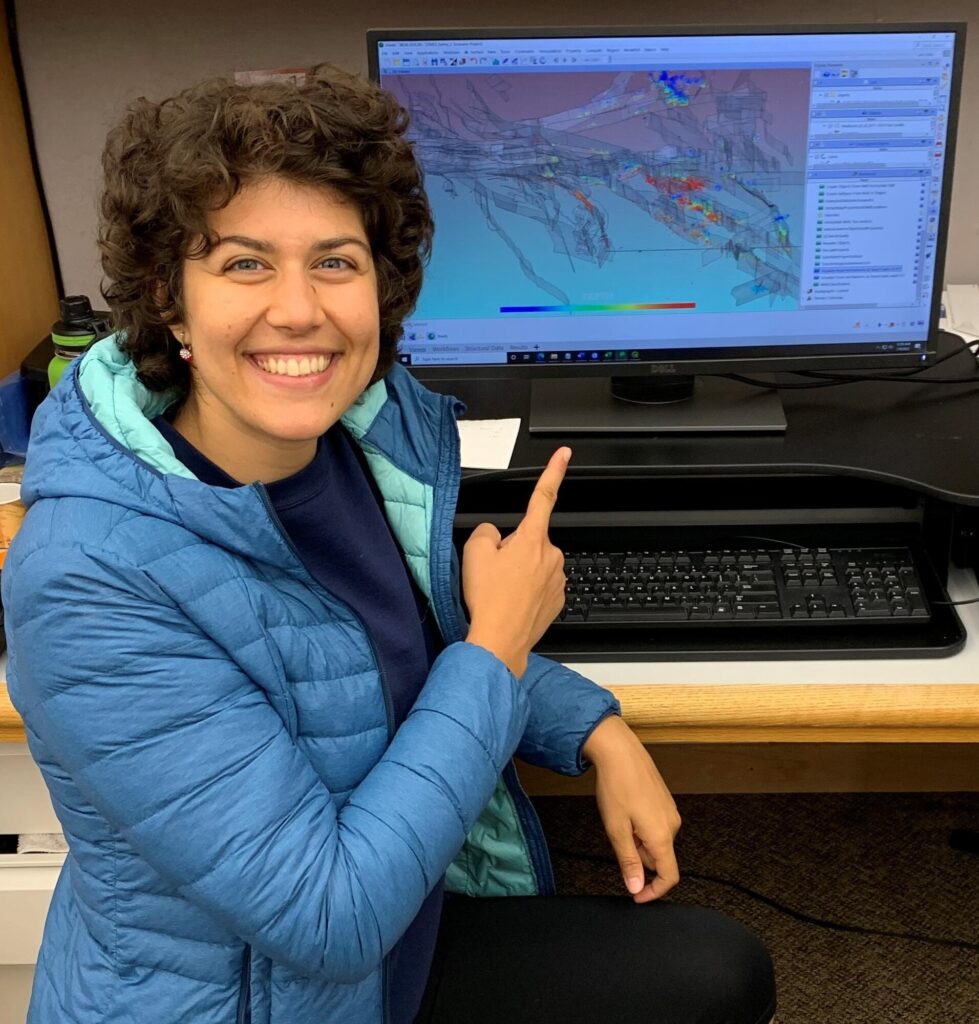
This summer experience has allowed me to build bridges between complex scientific models and the public understanding of hazards caused by seismogenic structures. I worked in Professor John H. Shaw’s lab for Structural and Economic Geology, specializing in an area where earthquakes are almost ubiquitous: Southern California. My goal was to facilitate the accessibility of scientific representations to a general audience. I collaborated with government officials on a project allowing the public to access 3D representations of faults which most likely generated any given earthquake, in real time. I also helped organize an expert review process for the Community Fault Model (CFM), a comprehensive 3D model of major seismic faults in Southern California. This involved the construction of a survey including 2D representations and descriptions of faults which have more than one accepted modelling at depth.
Since the direction and intensity of earthquake ruptures are determined by the geometry of faults, it is crucial the zones which are most prone to hazard from seismicity benefit from accurate models. Putting together a surveying tool for this purpose taught me to think of the importance of peer-review and consensus when science has a direct bearing on human lives and political decisions. Throughout the summer, I also pursued my own research project, involving the relationship between geothermal activity (the pumping of water from and to the undersoil) and seismicity in the Salton Sea Geothermal Field, in California. My goal has been to decide whether there is a significant link between anthropogenic activity and induced seismicity, and a fun step in the process has been learning how to generate 3D fault surfaces in the Earth’s crust using catalogues of past earthquakes. I believe that my summer has truly taught me the interdependency of any science with not only other institutions (federal, industry, other university programs) but also with the public, which ultimately benefits from the efforts of science.
Undeclared Concentration
Advisor: Daniel Varon
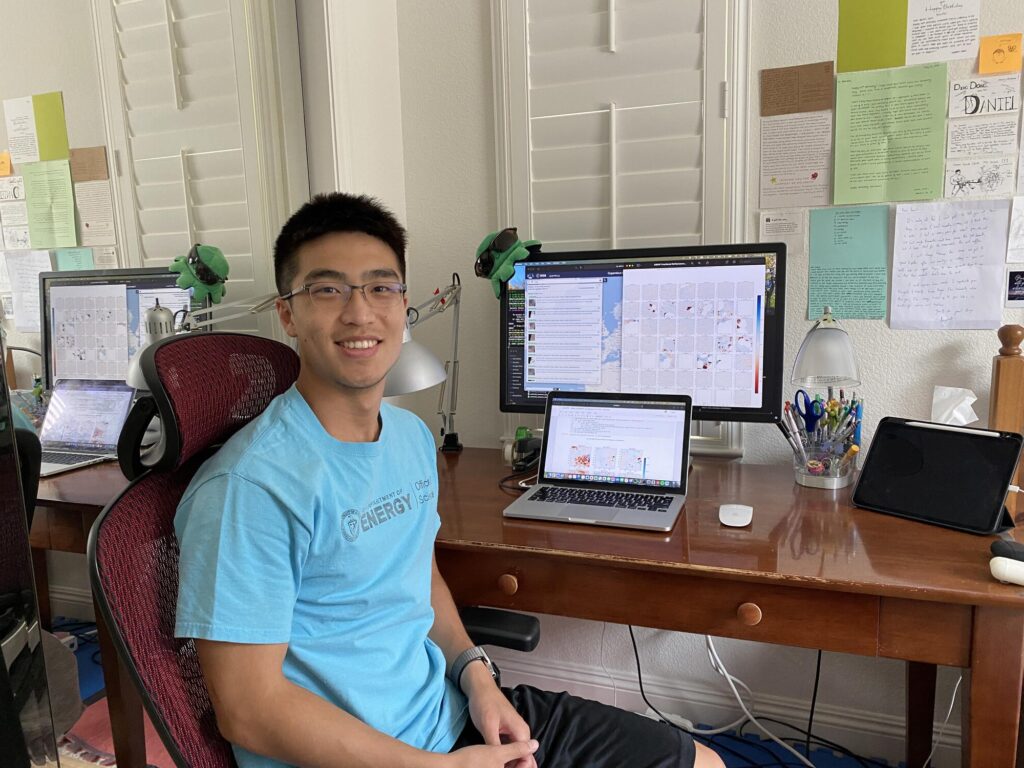
Methane is a prominent greenhouse gas that has contributed significantly to climate change. Satellite remote sensing is a popular method of observing the physical properties of an area from above the atmosphere. Combining the two, Varon et al. (2021) showed that remote sensing by the Sentinel-2 satellites can detect methane point sources at fine resolution of 20 m and high revisit frequency of 2–5 days. One limitation of the retrieval method was its use of a single regression coefficient to define scene-wide brightness differences between two satellite passes and/or spectral bands. Though valid for quasi-homogeneous terrain with uniform surface properties, this yields inaccurate methane retrievals over complex, heterogeneous terrain.
In this project, pixel-specific regression coefficients are introduced along with other modifications to improve Sentinel-2 methane retrievals over heterogeneous terrain. We find that these methods reduce retrieval noise by around 30% in a relatively uniform region of the Algerian Hassi Massaoud oil field (using 36 satellite passes from January 17, 2019 to January 17, 2020), 12% in a moderately heterogeneous region of the Permian Basin (June 26, 2020 to October 29, 2020, observed every 2.5 d), and 4% over a very heterogeneous region of the Permian Basin (June 1, 2021 to August 8, 2021, observed every 2.5 d). These improvements demonstrate the capability of Sentinel-2 and remote sensing in general to be a consistent, replicable, and robust technology for detecting and quantifying methane emissions.
Integrative Biology Primary, EPS Secondary
Advisor: Robin Hopkins
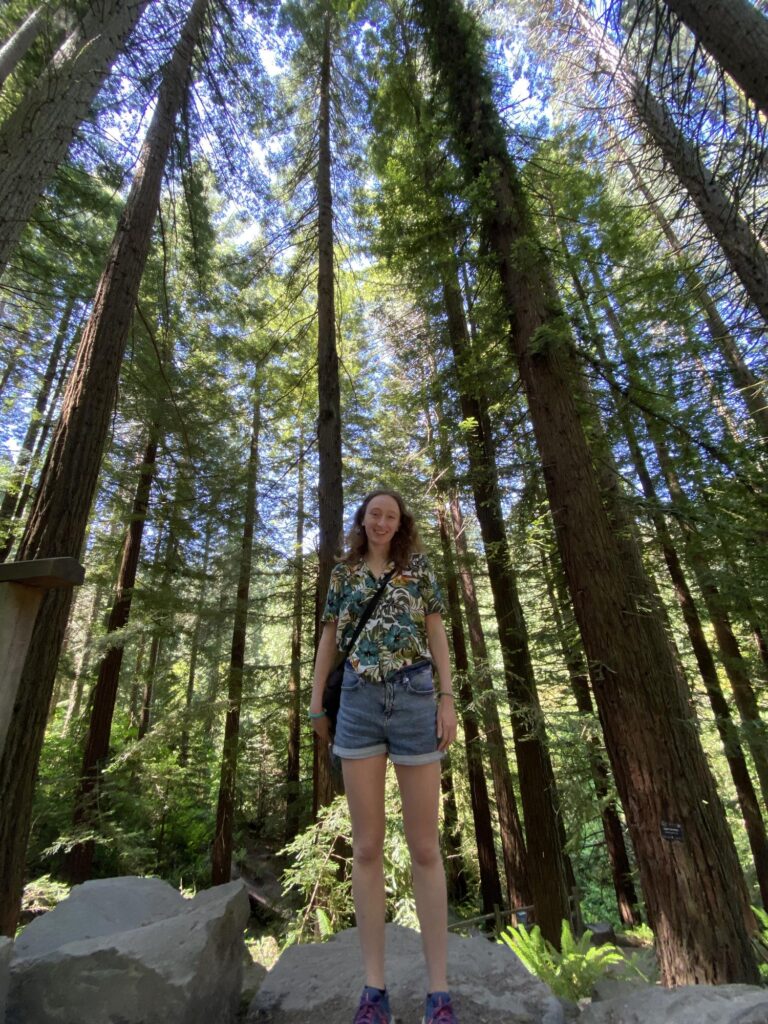
I spent this summertime among the trees at the Arnold Arboretum’s research facility in Boston. Working with Dr. Robin Hopkins of the OEB department, I employed DNA extraction techniques for leaf tissue samples and prepared a pipeline for genetic analysis on the university’s supercomputer. This is one facet of my thesis research, studying the health of red oaks in Cambridge and other urban areas across their North American range. I’m curious how climate change is impacting oak phenology (the timing of important annual events like leaf emergence and senescence) and how hot urban environments can amplify these effects on their arboreal population. By quantifying genetic variation, conducting kinship analyses, and analyzing leaf development with remote sensing, I strive to illuminate the degree to which phenology is heritable or at the will of the environment. This may be able to clarify oaks’ future adaptational strategy to live amid rising temperatures and whether they can rely on their genetic diversity for survival.
Advisor: David Keith (SEAS)
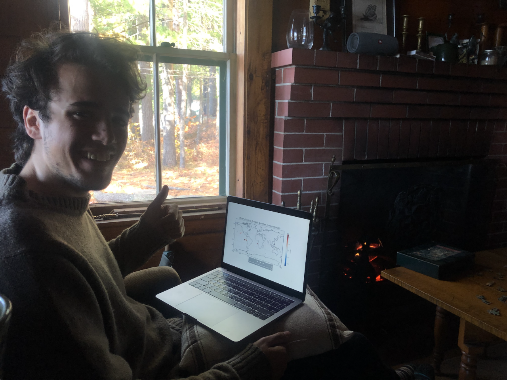
After graduating with the class of 2020, I have been working as a post-graduate fellow with the Keith Group here at SEAS to build upon the research I started for my senior thesis. The project’s aim is to study the potential for global marine cloud brightening to affect sub-seasonal weather patterns. The study uses a modified version of the Community Earth System Model (CESM) to study the response in 500 mb geopotential height fields to mesoscale changes in cloud droplet number concentration in high cloud fraction areas above key ocean basins. The goal of the study is to determine whether cloud seeding technology could potentially be used to manipulate planetary Rossby waves and therefore affect sub-seasonal weather patterns. I am working on this project primarily with David Keith (SEAS/HKS) and Marissa Saenger (Harvard ’19).
Advisor: Peter Huybers
The question of whether or not the Little Ice Age was a globally consistent event or just regional cooling has been a source of a lot of debate in the paleoclimate community. This past summer (2020), I worked remotely with Peter Huybers to develop a new method of looking at the spatial homogeneity of cooling during the Little Ice Age.
Using modern instrumental data, I found that by representing climate spatially as a series of binary variables (the climate in an area is either above the local average or below it), the spatial homogeneity of the global climate has an extremely close relationship with the global average temperature. I then developed this statistical framework further, using artificially sparse and noisy instrumental data to verify the technique’s usefulness for proxy data, which is much sparser and noisier than the original instrumental dataset. We applied this technique to a database of many different proxy types (data from tree rings, sediments, ice cores, and more), developing a way to use multiple proxy types to calculate the spatial homogeneity of the climate without the need for rescaling. Working on this project over the summer gave me the chance to learn a lot more about statistical methods and signal processing, and the results we found seem to suggest that the Little Ice Age actually was a globally consistent climate event!
Advisor: David Johnston
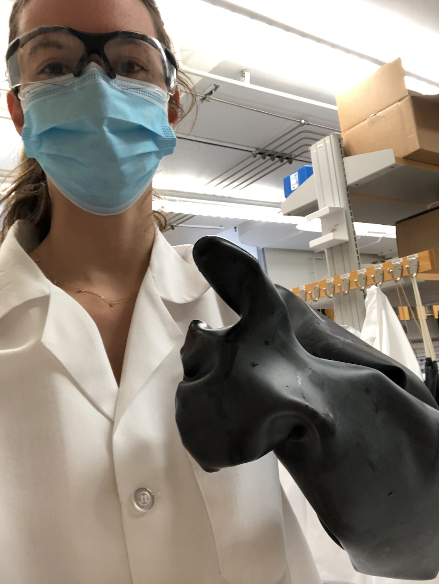
This past summer, I started work on my senior thesis! I worked remotely for the first couple of months, which gave me a chance to delve into the literature on my topic–the chemical mechanism involved in pyrite oxidation–and to familiarize myself with some of the mechanistic questions that remain. I also started framing and researching an idea that I developed with my advisors, Dave Johnston and Andy Knoll: a non-lab, investigative portion of my thesis devoted to the environmental and human impacts of the chemical mechanism I’m studying. In that section, I plan to focus on the pollution caused by pyrite oxidation (known as acid mine drainage) through the lenses of environmental history and environmental justice. And by late summer, with safety precautions, I was able to get back into the lab!
Working primarily with post-doc Jordon Hemingway, I’ve been getting some of my first experiments up and running. Most recently, I’ve started experiments to study the oxygen isotope systematics of sulfite-water and thiosulfate-water equilibria at various pH values. Next, I’m gearing up to start a series of pyrite batch experiments, in which I aim to determine how the source of sulfate oxygen (sulfate is a product of pyrite oxidation) varies according to reaction conditions. The goal of the lab portion of my thesis, as I currently see it, is to refine our understanding of the precise pyrite oxidation mechanism, such that prevention and remediation techniques for acid mine drainage could become more targeted and effective. I’ve loved working on this project so far, and I’m so grateful to my advisors, the Johnston group, and the EPS department for helping me have both a safe and fulfilling summer research experience, even under such unusual circumstances.
Advisor: Miaki Ishii
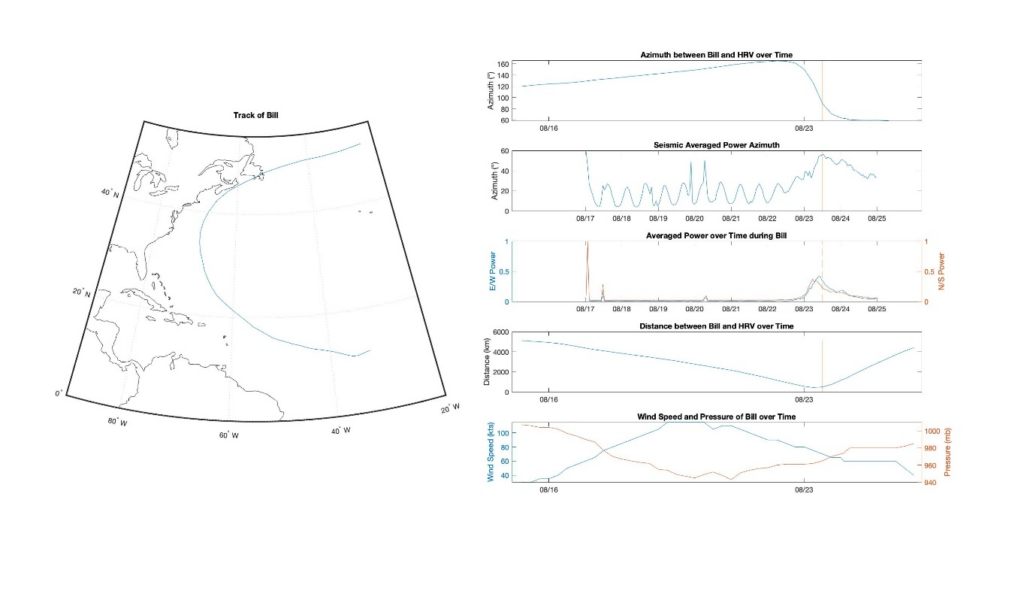
In summer 2020, I began a research project under the supervision of Professor Miaki Ishii and 1st-year PhD student Thomas Lee on the relationship between hurricanes and seismic noise. The main mechanism through which hurricanes produce detectable seismic signals is wave action, and investigating the effects of the hurricanes’ tracks and intensities on those signals were my main goal. Thus far, I have analyzed around a dozen hurricanes from the last decade and discovered that hurricanes of a particular track produce a particular seismic power signal.
My next steps include processing bathymetric data to see its effect on seismic noise and discerning the effects of local weather conditions on seismic noise from that of hurricanes or other coastal storms. Since quantitative seismic records extend much further back in time than meteorological records, being able to determine the track and intensity of a hurricane through the relationships between seismic noise and hurricanes I have been researching whose meteorological records are either absent or incomplete would allow for a more accurate characterization of ocean storms going further back in time than currently possible. Making the comparison between older ocean storms and modern ocean storms will contribute to the current understanding of the effects of climate change on ocean storm frequency and intensity.
Advisor: Jerry Mitrovica
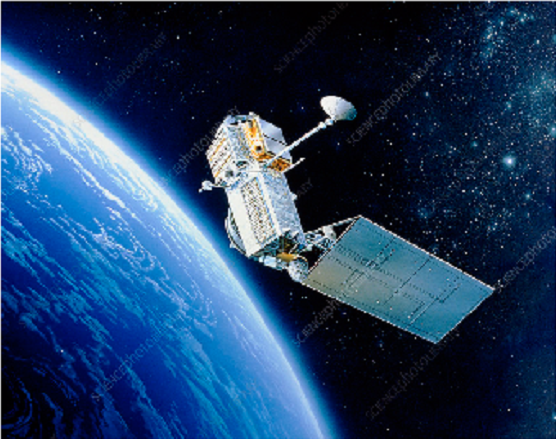
Changes in the Earth’s rotation rate, as measured by a series of artificial satellites, have been an important component of geophysical studies of modern climate. As polar ice sheets melt, and mass is moved away from the poles toward lower latitudes, the Earth’s rotation will slow down (just as a figure skater’s rotation will slow if they move their arms outward). However, a major complication in studies of Earth rotation is that the present day changes also have a contribution from ongoing adjustments of the Earth related to the ice age, and that contribution, in turn, is dependent on the Earth’s internal structure — in particular, the viscosity of the Earth’s mantle. Numerical “forward” calculations have shown that predictions of the changes in Earth rotation due to the ice age are most sensitive to viscosity in the deep mantle of the Earth, but despite 40 years of study the actual 3-D sensitivity to viscosity of these predictions is unknown, largely because traditional methods of computing the 3D geometry of the sensitivity are computationally impractical.
I am working on overcoming this limitation by using “inverse” rather than forward methods — that is, methods that begin with observations and work backward to constrain sensitivity. One extremely efficient technique for computing the sensitivity is the so-called “adjoint method.” In my research during the summer 2020, I used the method to map out the 3-D sensitivity to viscosity of Earth’s rotation changes due to the ice age. Once complete, this will be a major step in improving estimates of the ice age signal and, as a result, reducing uncertainties in estimates of modern polar ice melt.
Advisor: Elsie Sunderland
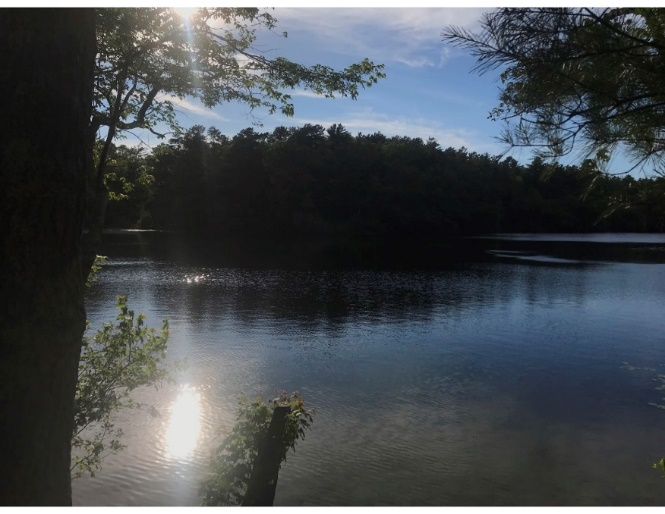
I spent last summer doing remote research with the Sunderland Lab where I was helping to conduct a water quality assessment of perfluorooctane sulfonate (or PFOS)-contaminated groundwater near our field site on Joint Base, Cape Cod. Using previously collected water samples on and around the military base, we were trying to understand the fate and transport of PFOS from the contaminated site to downstream groundwater and drinking water sources. We then did data analysis in order to incorporate that information into a risk analysis for impacted communities. I then began to explore census data, using demographic and geographic data sets alongside the geographical PFOS information. This project is continuing with the hopes that we can come up with a comprehensive risk assessment to understand the health risks of PFAS-contaminated water to various at-risk populations.
Advisor: Peter Huybers
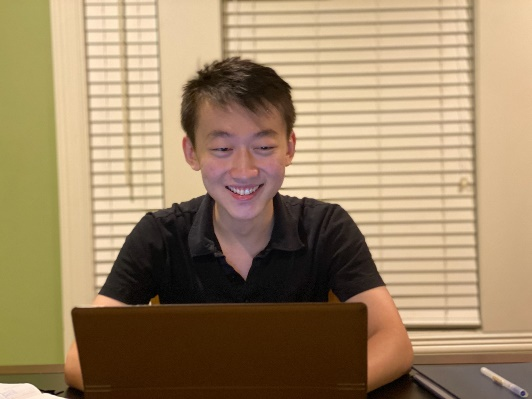
The ocean is one of our planet’s most tenacious defense mechanisms against rapid changes in climate; yet over the past few years, there have been many publications suggesting that oxygen in the ocean (and especially the deep ocean) is being depleted at an unprecedented and alarming rate. Most of the analyses, however, use data gathered by ships from various countries over the last half-century, and as such, we need to account for differences that may exist between ships. Distinct ways of measuring, recording, and even rounding measurements could constitute systematic offsets which could in turn generate artificial trends. My remote project during the past summer (2020) was to first, determine if such offsets were present, and then to quantify their impact. Under the guidance of Professor Huybers and Duo Chan, I found offsets between ships originating from over twenty nations and at a magnitude consistent with the decreases in oxygen reported in other studies. Building on these exciting results, I am now working to remove these offsets and determine what changes are actually happening in the deep ocean.
Advisor: Steve Wofsy
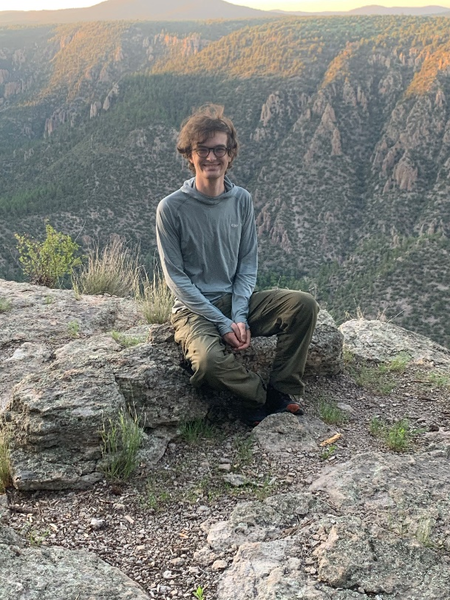
This past summer, I worked in the Wofsy Group analyzing ATom data. Professor Steven Wofsy, Dr. Yenny Gonzales, and Professor Roisin Commane and I are interested in N2O source processes as observed by ATom. N2O is an important greenhouse gas, and depletes stratospheric ozone. I took several angles on this project; I clustered the ATom observations based on trace gasses, estimated N2O fluxes, and read a lot of literature. I learned a great deal this summer. My coding skills improved, and more importantly, I began to take more ownership of atmospheric chemistry science questions. It was a little strange working remotely, but on the other hand I could bring my dogs to work every day and hike in the Sonoran desert as a break. This work will culminate in my thesis this spring!
Advisor: John Shaw

When the pandemic struck, I didn’t think I could have a great summer at all. However, I reached out to my (first ever) geology course professor, John Shaw, who introduced me to the world of structural geology. He very quickly shared with me what projects his group was currently working on, showing me what kind of work each would entail for the summer (2020). I ended up choosing to work alongside Jessica Don, a sixth-year PhD student in the group, and the most awesome dog on Earth, her Sage! I received tremendous support in getting the appropriate software going and started getting familiar with the geologic structure of the Mid-channel blind-thrust fault, located just offshore Santa Barbara.
Having to map the evolution of this structure along its length (strike) allowed me to learn three things. First, what sort of data and data limitations structural geologists commonly deal with. Second, how to use the most advanced modelling tools (such as Gocad) to trace the evolution of sediment beds with better precision as to their different ages. And third, how this specific structure fits into larger ones, such as the Transverse Ranges and ultimately the strike-slip fault of San Andreas, which allowed me to apply the understanding of the building blocks of tectonics I had learned in class. Aside from learning so much through building a model of the Mid-channel fault based on available past interpretation, seismic lines, borehole measurements and more, I was able to learn about many more different projects through the weekly meetings with Professor Shaw’s group. These always brought a lot of perspective by visiting how geologic principles apply at different scales, and can be involved in so many areas, from industry, to community models to help reduce seismic hazards, and to theoretical research. I know that this experience, through the support of Jessica, Sage, Professor Shaw and every member of his group, has opened my eyes to a discipline I now wish to pursue!
Advisor: Dave Johnston
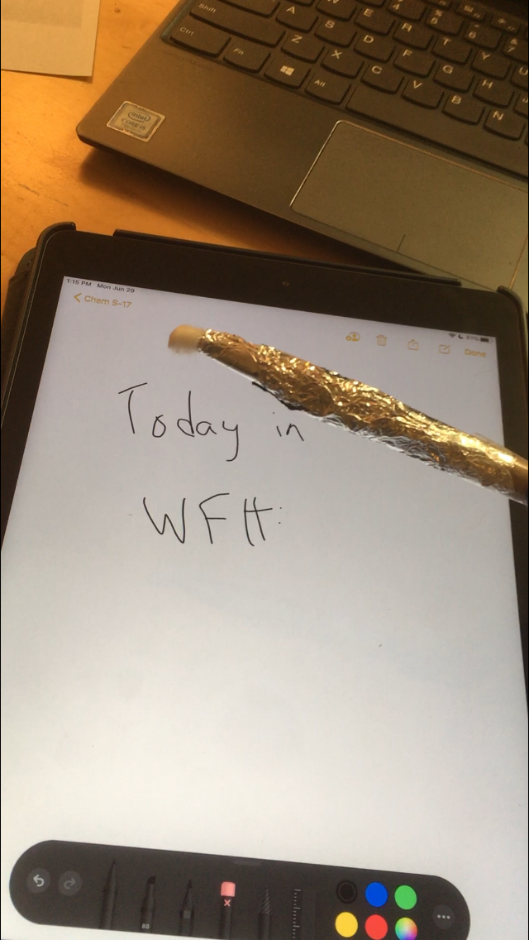
This homemade tablet stylus encapsulates my research experience during summer 2020: the circumstances may have been constricting, but there was still a way to benefit despite the limitations. In the Johnston lab, Beck worked with Anna Waldeck and Dr. Johnston on a number of small projects all related to current research in stable isotope geochemistry. I engaged with the revision process of Haley Olson and Anna’s publication about triple oxygen isotopes in Messinian sulfate evaporites. Along with other undergraduate researchers, I explored various geological applications of stable isotope geochemistry through literature review, reading groups, and attending the virtual Goldschmidt geochemistry conference. With Anna’s help, I made a basic fact-sheet about stable isotope geochemistry and a few relevant applications geared toward other beginning undergraduate researchers. I also gained significant programming knowledge, completing a data science course in R and applying the programming to various geochemical problems.
Advisor: Marianna Linz
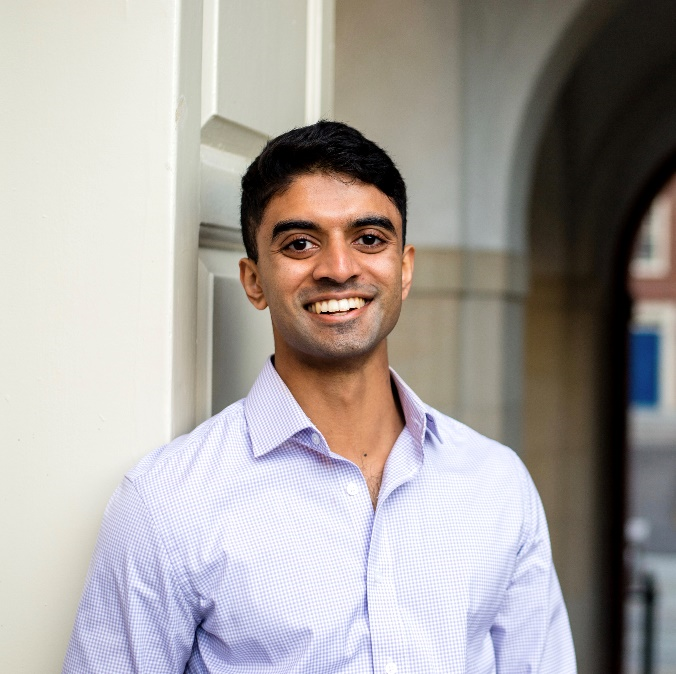
This past summer (2020), I extended the research on optimization methods for solar geoengineering that I performed over the past year for my senior thesis. Solar geoengineering defines the set of methods that attempt to mitigate the effects of anthropogenic climate change by modifying the terrestrial response to solar radiation. Although a growing body of literature examines the use of geoengineering to achieve large-scale objectives like global mean temperature reduction, little research has investigated the regional ramifications of geoengineering practices.
In my senior thesis, I utilized the output of seasonally and regionally variant geoengineering simulations conducted in the HadCM3L global climate model to analyze the ability of linear optimization methods to modify regional climate objectives. During the summer, I conducted a series of experiments in the higher-resolution CESM climate model to investigate the ability of regionally optimized geoengineering patterns built from a simpler model to predict local effects in a more complex climate system, examining impacts on both mean temperature and precipitation effects and regional climate extremes. I also examined the impact of these regionally optimized geoengineering patterns on climate extremes by documenting changes and patterns in droughts, heat waves, and precipitation extremes. My paper ultimately demonstrates that although a regionally optimized geoengineering mechanism may mitigate regional impacts in a model setting, it likely would disproportionately harm some land areas and populations more than others when applied to the real world. The inability of optimized forcing patterns to alleviate local rainfall reduction and drought amidst increased model complexity suggests that geoengineering may be unable to reconcile global temperature reduction with locally adverse human-, agricultural- and wildlife-related impacts.
Advisor: Stephanie Pierce

This past summer, I worked remotely in Stephanie Pierce’s vertebrate paleontology lab under the supervision of postdoc Megan Whitney. I was studying the bone histology of axolotls, which have a primarily aquatic lifestyle, and terrestrial tiger salamanders to look for signals of habitat since amphibians undergo different mechanical strains in aquatic versus terrestrial environments. Using Dragonfly software, I segmented different bone elements of femora across developmental stages from micro-CT scans of samples in the Pierce Lab. Qualitative preliminary results suggest that rather than trabeculae (spongy bone) presenting prominently in our samples, distal and proximal calcified cartilage, which is degraded throughout endochondral ossification, did. This suggests that retaining calcified cartilage may be a potential variable related to relative degrees of terrestrial specialization worth exploring. I will gather more qualitative data this coming semester to explore this observation. This work will be used to support developing a framework for interpreting paleohistology using salamanders as modern analogues for the water-to-land transition.
Advisor: David Keith (SEAS)
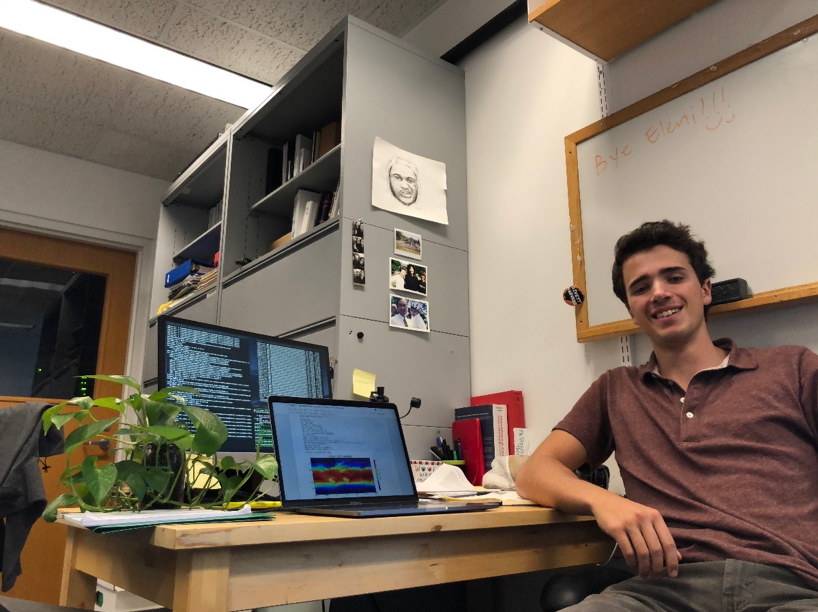
Aidan Crawford (Environmental Engineering S.B. with an EPS Secondary) spent the summer working on a solar geoengineering research program as a part of the Keith Group at Harvard SEAS. His project examined the potential effect of a Marine Cloud Brightening (MCB) geoengineering scheme on various natural climate mechanisms. In particular, he focused on the ability of a general or targeted MCB deployment to alter the tracks of tropical cyclones before they make landfall. The project utilized NCAR’s Community Earth System Model (CESM) to simulate climate response.
Advisors: Marine Denolle, Brad Lipovsky
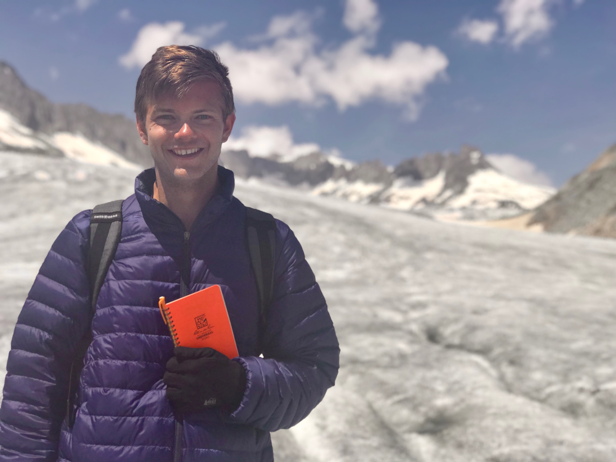
While taking Dr. Brad Lipovsky’s course in Glaciology last fall, I used seismological tools and methods to try to measure ice sheet thickness. The project involved downloading and analyzing data from existing seismic stations in Antarctica, and it introduced me to the intriguing field of glacier seismology. I quickly decided to dig deeper by doing summer research with Brad and Professor Marine Denolle. We soon began to look into potential glaciers for a project in which we would gather original data to attempt to couple seismology to subglacial hydrology. In July, I traveled with Brad and Stephanie Olinger (G2) to Valais, Switzerland, where we deployed small, three-component Raspberry Shake seismometers on three different glaciers over the course of a week. On Gorner Glacier and Rhône Glacier (the first and last glaciers we visited), we deployed instruments overnight. Conversely, on the pancake-shaped Glacier de la Plaine Morte, we visited two different sites — spending the first day near a human-engineered channel and the second near the large terminus — and conducted multiple shorter deployments for each instrument on both days (and stayed at a cool alpine hut in between!).
We generally deployed the seismometers near features such as moulins, superglacial rivers, and termini. Additionally, we flew a drone at all sites except Rhône Glacier (where flying is prohibited) to construct digital elevation models (DEMs) of the glaciers in their current forms, which have diverged drastically from even the most recent Google imagery. Since returning to Cambridge, I have been processing the Swiss data: plotting spectrograms, relating the results to weather and hydrological features, and cross-correlating signals to analyze various events. Many thanks to Brad, Marine, and Stephanie, for their tremendous guidance and dedication all summer; to EPS and HUCE (and their wonderful staff members) for funding and supporting this research adventure; to Professor Fabian Walter and his group at ETH Zürich, for their collaboration at Plaine Morte and for providing us with mountaineering gear; and to Dr. Adam Soule of WHOI, for lending us his awesome drone and for helping with the DEMs.
Advisor: Miaki Ishii
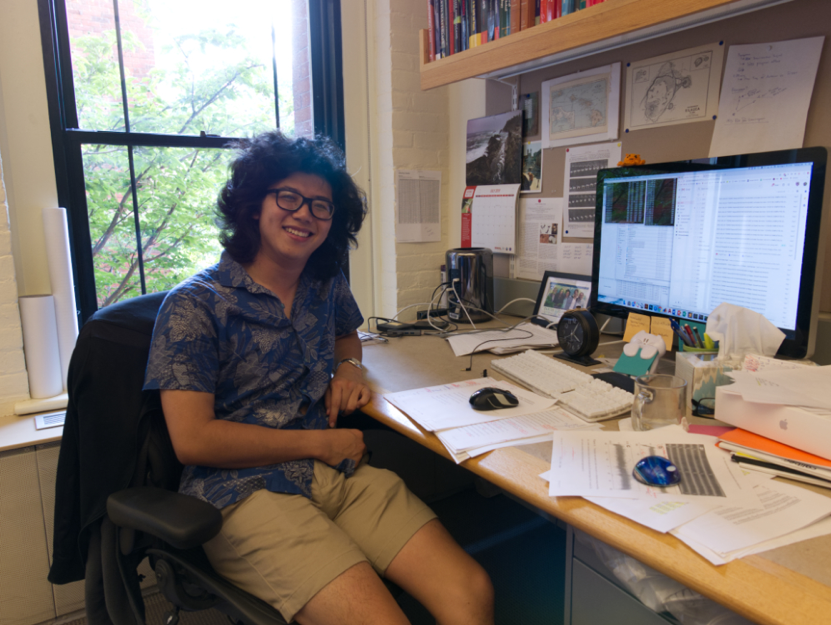
This summer, I spent time working in EPS with Professor Miaki Ishii on both building further upon my thesis work, and wrapping up a project on time corrections for analog seismograms. My thesis work was on imaging the subsurface of Kīlauea, Hawai`i during the volcanic eruption of summer 2018 using ambient seismic noise, this work has since expanded to investigate the volcanic tremor detected in the seismic noise and ways to track it. As work progresses, this work could bring great benefit to both the volcano-monitoring and volcanic-hazard communities. The time correction project involved using the symmetry present in seismic noise correlation functions to generate relative time corrections between stations. This method was applied to digitized paper seismograms, and opens up more opportunities for the use of such legacy data.
Advisor: Steve Wofsy
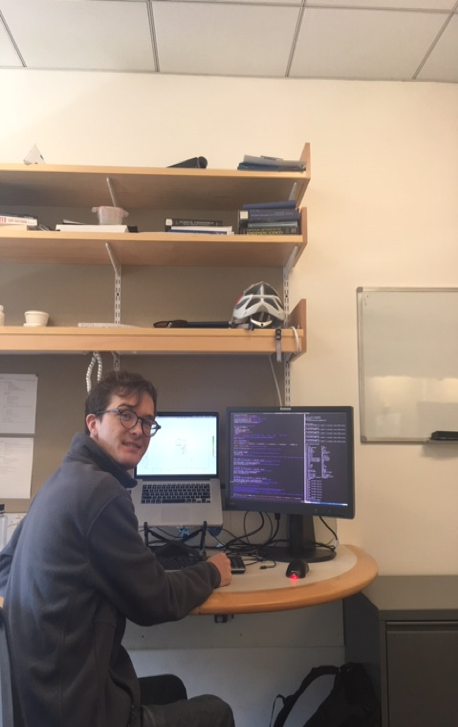
I spent this summer working in the Wofsy group on data from the ATom campaign. My project meandered a fair bit over the course of two months, before I settled on a plume of carbon monoxide that is flowing off the west coast of Africa into the air above the Atlantic. Specifically, I am interested in the different sources of CO, and how the trace gasses associated with the emissions from those sources affect hydroxyl chemistry.
OH is crucial to the atmosphere’s ability to remove methane and other pollutants, and understanding how human emissions are changing atmospheric OH is an important and challenging problem. I have deeply enjoyed learning technical skills including how to use the Harvard Odyssey Computing Cluster, as well as how to interact with data structures I had not seen before outside of EPS research. Perhaps more important has been my growth in terms of the research mindset: being flexible, and knowing when to ask for help. The best part of the summer has definitely been meeting all sorts of wonderful people, both at Harvard and in the broader EPS community.
Advisor: Kaighin McColl
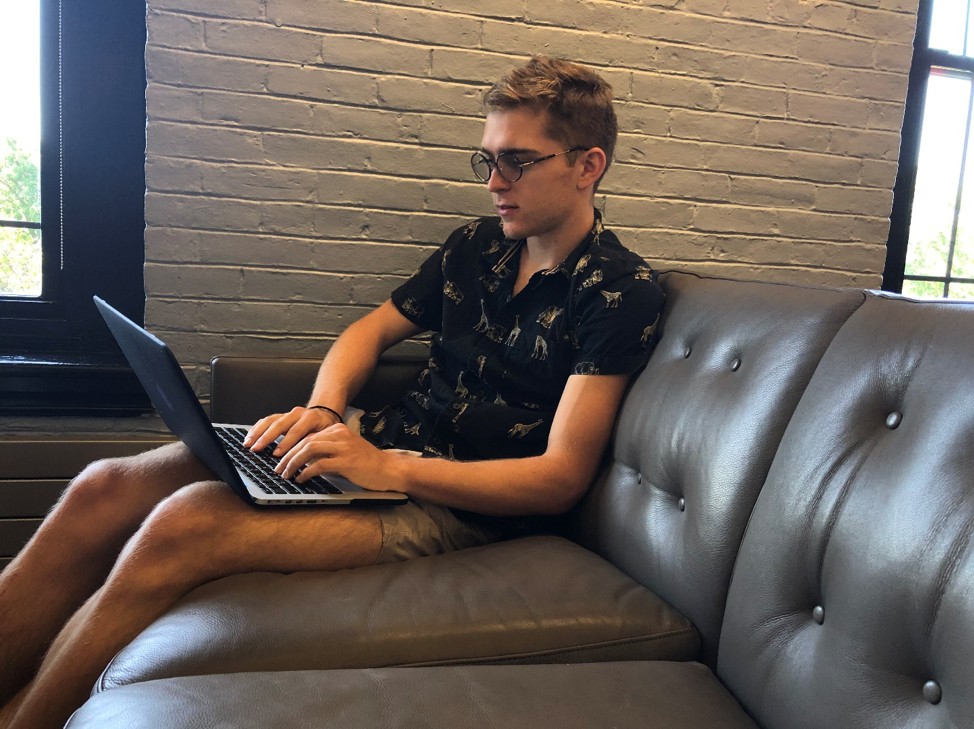
My research this summer is if focusing on how microwave satellite observations could greatly improve our ability to monitor fuel moisture content, and to predict wildfire risk. The Soil Moisture Active Passive (SMAP) satellite, an L-band microwave satellite mission launched in 2015, provides global retrievals of surface soil moisture (SM) and vegetation water content (VWC) at 9-km resolution. In this study, we will test the added utility of SMAP observations on several recent wildfires, including California’s 2018 Camp Fire. Wildfires are identified using observations from the Moderate resolution Imaging Spectroradiometer (MODIS) burned area product. For each wildfire case study, time series of SMAP-observed SM and VWC in the days preceding the fire will be compared to corresponding time series of weather-based fuel moisture content proxies currently used in wildfire risk predictions. By comparing current prediction models with data from the SMAP instrument, this project aims to assess the potential for improving wildfire predictions with microwave satellite observations.
Advisor: Scot Martin
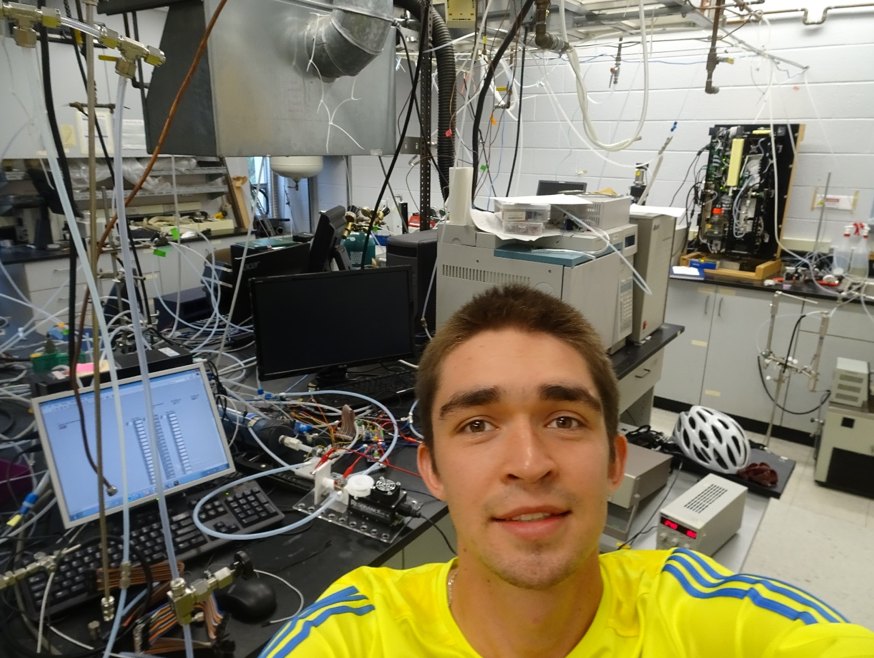
I spent the summer building a drone based photoionization detector (PID) to measure volatile organic compounds (VOCs). I spent much of the summer in the Physics/SEAS Machine Shop where I also received my green certification manufacturing the sensor and performing laboratory testing afterwards. This is all for my senior thesis, which I will be presenting in November, and I also plan on presenting my work at AGU in December afterwards. The instrument I’ve built currently detects to around 3ppb, and I hope to soon have it at 1ppb detection as I keep evolving my design. The trickiest part is proving to be the electronics, as I am measuring fractions of nano amps, so I am having to quickly learn other skills to help solve the atmospheric measurement problem I set out to solve initially!
Advisor: Jerry Mitrovica

I am working in Professor Mitrovica’s research group with graduate students Marisa Borreggine and Evelyn Powell. The overarching goal of our project is to determine the most likely pathway for the first human migration from Sunda to Sahul. Within the greater project, my focus is determining whether or not one island is visible from another island, a variable also known as inter-island visibility. This variable impacts the probability of human movement from one island to another; greater visibility lowers the risk involved in a potential crossing and consequently heightens the probability of movement. Over the summer, I have been developing a code that will create several maps we will use to determine inter-island visibility and the likelihood of travel from one island to another. This will allow us to evaluate potential pathways between the two major landmasses and brings us one step closer to determining the most likely migration pathway from Sunda to Sahul.
Advisor: Ann Pearson
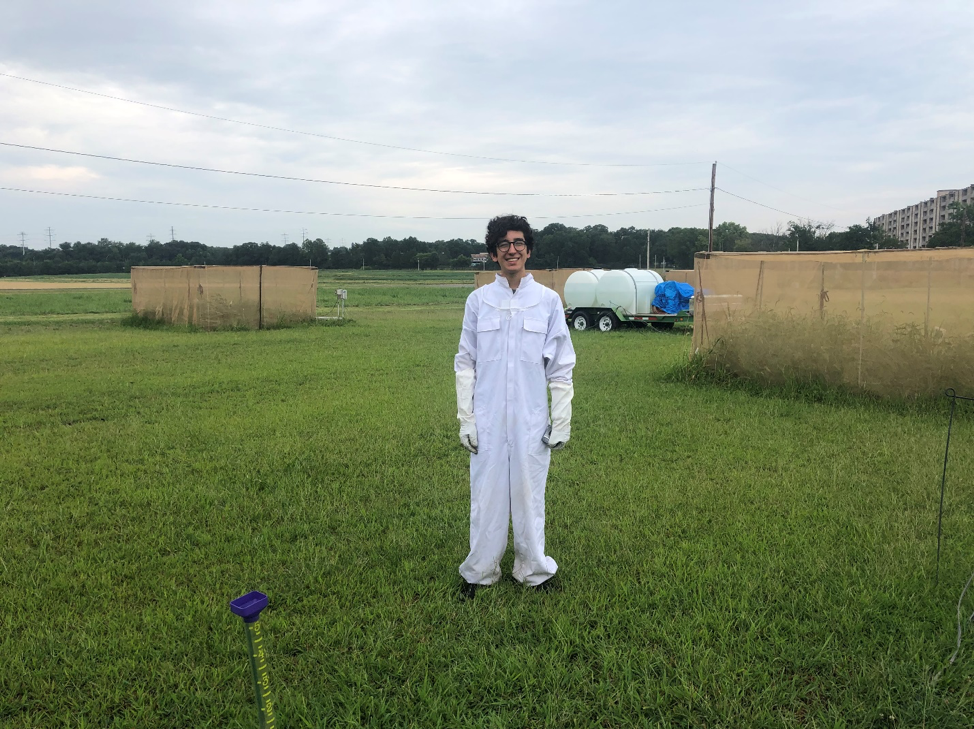
Past research has reliably found that elevated levels of CO2 (eCO2) cause protein, zinc, and iron reductions in agricultural crops like rice and wheat, but there has been much less research about how eCO2 might affect food sources that are important for pollinators — that is, flowers. Bees depend on pollen protein for larval development, but researchers are worried that, like with cereal grains, eCO2 could bee causing flowers’ pollen protein concentrations to drop. Senior Researcher at the USDA Lew Ziska recently confirmed this was the case for goldenrod, an important source of pollen for bees that overwinter — the apian equivalent of hibernating.
So this summer, I joined his lab at the Agricultural Research Service near Washington, DC to find out how eCO2 might affect other flowers. We used growth chambers to grow eight flower species from seeds, half of them in a 400ppm environment and the other half in a 600ppm environment. Then we transplanted them to eight outdoor plots, sealed them off in a mesh enclosure, and placed a bumblebee colony in each plot, allowing the worker bees to collect pollen from each plot’s flowers. Just like the bees, I have spent much of my time hand-collecting flower samples, then dissecting and storing them for later analysis. We also plan to run analyses on each of the eight beehives — we‘re going to flash freeze them in the final days of the experiment so they can be shipped back to Harvard. This fall, my advisor and I will assay the flower samples for protein content, among other things. In this photo you see me in the bee suit — a vital tool for my research! When provisioning the bees with pollen, you have to remove the hive’s entry box, open the lid, and force pollen pellets through small slits in the top of the box. It’s for their benefit, but they can get pretty angry about the intrusion!
Advisor: David Johnston
This semester, I’ve been working with Jordon Hemingway in the Johnston lab on a series of experiments related to pyrite oxidation under a number of conditions. So far, the experiments have involved oxic conditions–namely, rate calculations at varying pH. We also produced a calibration curve so that we can reliably use the spectrophotometer as a measure of sulfate production; this will likewise let us determine the reaction rate. Next, we will do these experiments in a chemostat setup, which allows for the maintenance of extremely constant chemical conditions, like pH and dissolved oxygen concentration. I haven’t done much lab work before, so most of the steps involved are unfamiliar to me. As a result, this has been an excellent learning process, and I feel far more capable in a lab setting than I did at the beginning of the semester.
Advisor: John Shaw
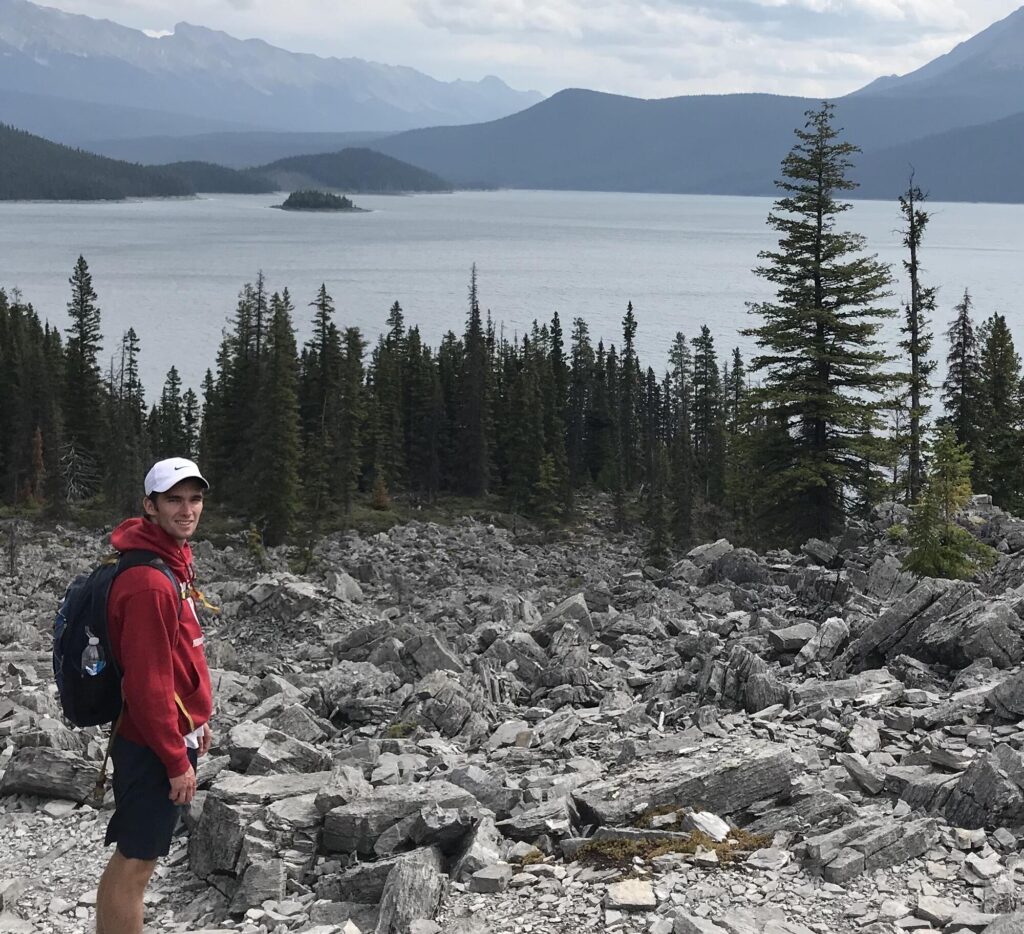
This semester, I collaborated with John Shaw’s group on a project focusing on the geology of the Andes Mountains. By interpreting this geology, we hoped to inform the search for energy resources in the subsurface. We began at a high level, reading papers and learning about how these mountains formed, with a specific interest in the Andean orocline–the bend in the mountain chain. I then began to collect high resolution satellite imagery of regions that we identified as important. I learned to stitch together the images using GIS software, and then layer different types of images on top of each other to create a 3D, true color representation of local geological formations. This new imagery will be used to improve existing seismic reflection data of the area and will likely be used to inform upcoming field expeditions.
Advisors: Ann Pearson, Jenan Kharbush
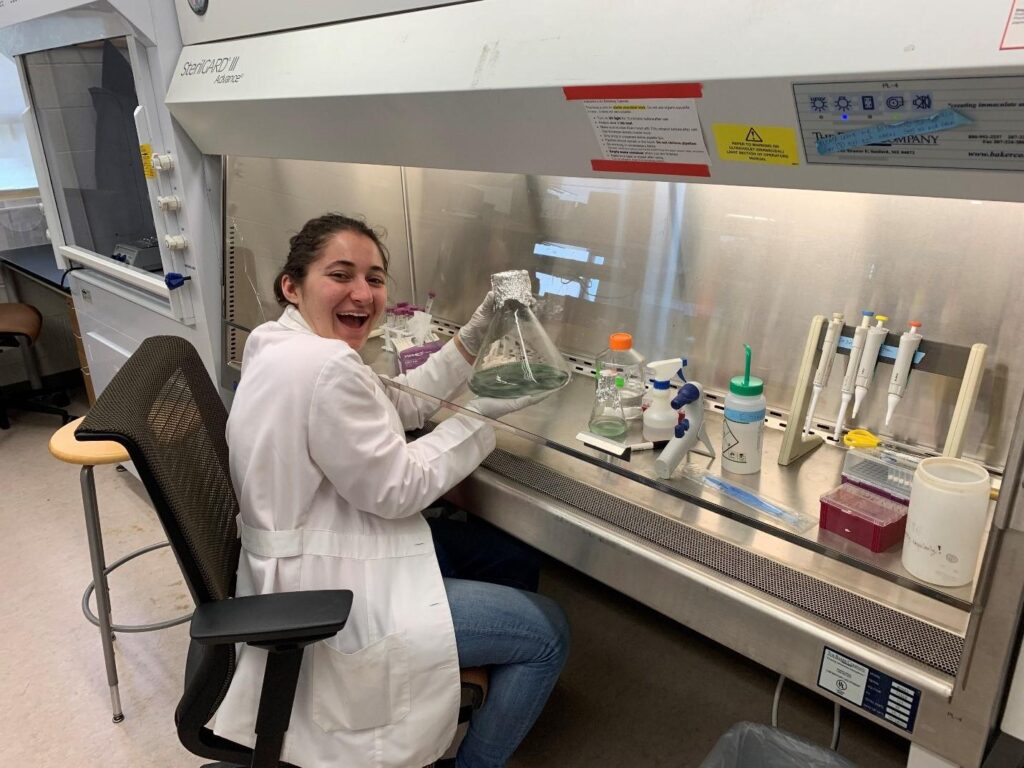
This spring, I’ve been working with Dr. Jenan Kharbush as a research assistant in the Pearson lab on a project that analyzes the fractionation of nitrogen isotopes in photosynthetic microorganisms, specifically diatoms and cyanobacteria. I’ve been happy to work as a primary caretaker of the lab’s critters, including growing, transferring, and harvesting diatom and cyanobacteria cultures; developing cryopreservation methods to maintain the cultures; developing growth curves for each culture based on optical density and cell count; and measuring nitrogen and chlorophyll concentrations at different growth stages with nitrogen/chlorophyll assays. During my time in the lab, I’ve learned how to grow and analyze cultures, how to mix and create different kinds of media, how to perform various procedures including isotope assays, and how to develop and follow a scientific procedure in an experiment—along with countless other valuable scientific skills that I’m immensely grateful to have learned in a hands-on, active environment. Here I am transferring a cyanobacteria culture in the sterile hood! (photo creds to Jenan)
Advisor: Roger Fu
Early this semester in Roger Fu’s paleomagnetics lab, I prepared a meteorite from the asteroid Vesta for analysis under the cutting-edge Quantum Diamond Microscope. The QDM was then used to map the meteorite’s magnetization, which it received while under the influence of Vesta’s ancient dynamo. Preliminary results suggest the magnetization is contained within vein-like features, but the magnetic carrier minerals themselves have been elusive. I am gathering more data now to puzzle this out. I have also assisted in the preparation of zircon samples, the oldest magnetic recorders on Earth. The magnetization of these zircons will tell the latitude of their formation site (paleolatitude) and provide novel constraints on ancient plate tectonic motion.
Advisors: Ann Pearson, Felix Elling, Shelley McCann
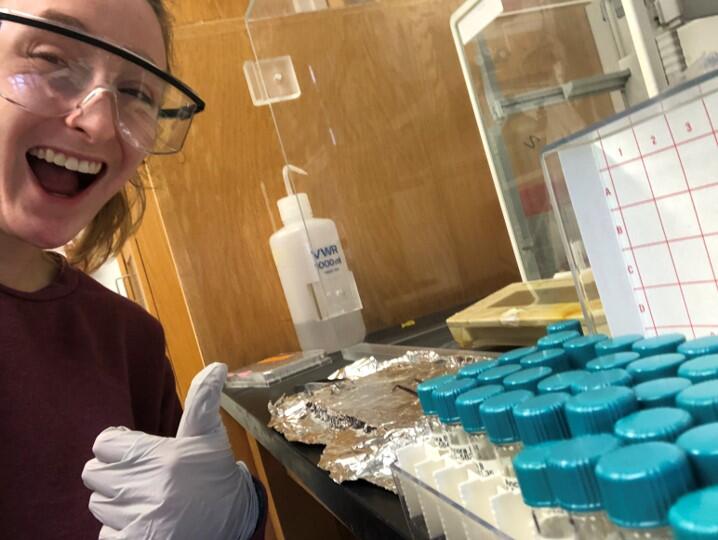
Over this semester, I’ve worked on two separate projects with Shelley and Felix, in Ann Pearson’s lab. Shelley is trying to grow archaea under different conditions (both autotrophically and heterotrophically) to eventually analyze their membranes for GDGTs, lipids whose concentrations have been shown to covary with temperature. This could be important for reconstructing paleoclimate using the TEX86 variable (a ratio established from concentrations of different GDGTs).
I assisted Shelley by working with the archaea grown on iron, calculating their day-to-day growth with Fe-oxidation assays. Felix is working to understand nitrogen cycling at the PETM (Paleocene-Eocene Thermal Maximum). In the three different sediment cores we are using, there are notable carbon excursions that denote the PETM, and we are wondering if we will notice a similar trend in nitrogen. I have been massing and preparing core samples to run on the EA. This process has been slightly trial and error, as we are trying to find the appropriate mass to deliver a large-enough N peak for analysis. Pictured: Me wrangling New Jersey sediment core samples, massing them and dexterously loading them into tiny tin foil cups.
Candice Chen reflection on attending AGU: I attended the AGU Fall Meeting to present my research that I conducted this past summer. Presenting my poster was a great chance to improve how I communicate science, and I got to meet various people who do similar work in the paleoceanography community. Through comparing our results and discussing the applications and limitations of the proxy we use, I gained a lot of perspective that will help me as I write this project into a paper. Attending other sessions was a wonderful way to both deepen and broaden my understanding of different areas of geoscience—these made me excited about directions I may want to take in future research. It’s also inspiring to hear people discuss what they’re passionate about as they present their science. AGU was such a valuable experience for me, and I’m confident that what I learned and saw there will inform my future directions.
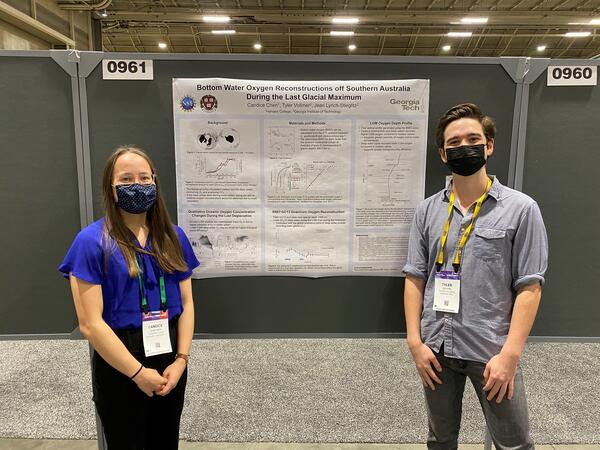
Maya V Chung: OS43C-2094 Quantifying Isopycnal Heave Using Dynamic Depth Warping
Rebecca Cleveland Stout: PP13C-1350 Leveraging Preservation Bias in Last Interglacial Coral Sea-Level Records to Refine Global Ice Volumes Over the Ice Age
Molly Michael Wieringa: GC51K-0928 Identifying and Characterizing Trends in Precipitation Patterns and Related Climatic Influences across Equatorial Africa
Vladislav Sevostianov: C41A-0355 Time Dependent Frictional Changes in Ice due to Contact Area Changes

